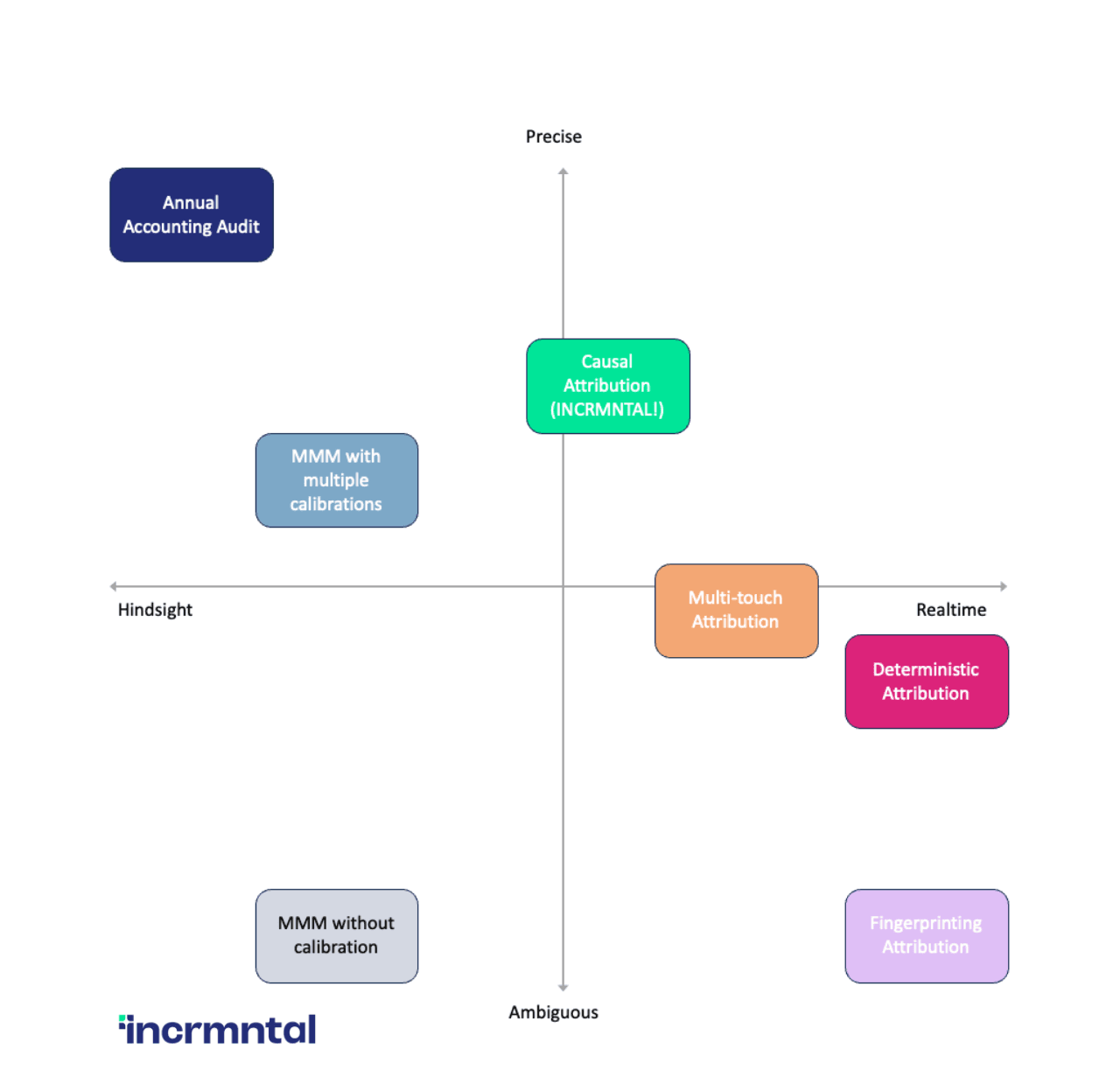Solutions
Teams
Built for your whole team.
Industries
Trusted by all verticals.
Mediums
Measure any type of ad spend
Platform
Use Cases
Many Possibilities. One Platform.
AI and Automation
The Always-on Incrementality Platform
Teams
Built for your whole team.
Industries
Trusted by all verticals.
Mediums
Measure any type of ad spend
Use Cases
Many Possibilities. One Platform.
AI and Automation
The Always-on Incrementality Platform

Fingerprinting has got to be the most controversial method of attribution. If you are a mobile marketer, you probably know that Apple explicitly said that Fingerprinting is not allowed. But major advertisers, attribution platforms, and ad networks continue using Fingerprinting as a legitimate method of tracking and even billing.
In this article, we will be explaining what fingerprinting is, what are some of the pros and cons of using this method of attribution, and whether it is legitimate or not in our point of view.
Fingerprinting, or Fingerprinting attribution, is a term used in digital marketing to describe the act of measuring campaign performance by creating a digital fingerprint that would allow a precise matching between user’s ad engagement (viewing ads, clicking on ads), and performing actions (installing an app, registering to a service, making a purchase).
Unlike the term deterministic attribution, fingerprinting uses various parameters to try and create a forensic probable identification of a user in their journey. Common parameters are: device IP address, device type, location, and others.

Attribution is currently the currency of the digital advertising world. Advertisers, specifically, performance advertisers, need to use a 3rd party attribution provider to work with several advertising platforms.
The purpose of an attribution platform is not accuracy in reporting, as attribution typically would credit only one ad platform for bringing a conversion, which would be like giving 100% credit only to a player for scoring a goal in a football match.
The real purpose of an attribution platform is sending postbacks to ad platforms, so that the ad platforms have some sort of an indication of the results they generate for an advertiser. Accuracy or reliability was never promised in the conditions.
Fingerprinting is a very simple method of attribution, and one of the biggest benefits of it is that is operates in real time or near it. A click containing IP address: 127.0.0.1 will be matched with an install from a device with the same IP, triggering a postback indicating to the publisher: “hey – you generated an install”, simply thanks to the publisher being last to tag the user.
While handy, and easy to use – fingerprinting has several limitations and cons associated with it:
Fingerprinting is forbidden and is not supported by the largest advertising platforms. Namely: Meta Ads, Google Ads, Apple Search Ads
Fingerprinting continues by several ad platforms and attribution platforms, even though it is not allowed by privacy laws and platform regulations. If (or once) fingerprinting bans will be enforced by the platforms, fingerprinting will be eliminated.
Even though you’ll be told differently, Fingerprinting mostly relies on IP for matching, which would make it inaccurate. Many ISPs assign dynamic IP addresses to users, which frequently change. IPs are shared in public or shared networks (e.g. offices, universities)
No attribution platform today shares the level of accuracy or match rate. Experts estimate that the match rate for fingerprinting is less than 50%.
While fingerprinting does not always point to ad fraud or bots – most fraudsters and bot farms do heavily rely on fingerprinting attribution as it is a vulnerable method for tracking.
Using fingerprinting billing (i.e. paying for conversions tracked using fingerprinting attribution) exposes advertisers to enormous risks that almost all conversions would be either fraudulent, non-existent, or conversions would be cannibalized from organic conversions or from those driven by legitimate ad platforms.
Likely not. Attribution is an important tool for digital marketers, as it is the only method of attribution that operates in real time or near it, and while accuracy is not its’ strong side – having a measurement tool that is real team is critical for the marketer operating dozens of campaigns, and hundreds of ad creatives.
While accuracy continues deteriorating – most marketers will choose to continue fingerprinting, even if the tradeoff is between having measurement with a 50% accuracy or nothing at all.
Even with reduced access to user level data fingerprinting platforms will continue looking for ways that may triangulate between ad engagements and conversions happening. Accuracy will continue gradually declining, but again, accuracy has never been the promise of click based attribution.
My view of the world is that advertisers do already utilize several tools to make decisions, even if they are not aware of it. The notion of a “single source of truth” for measurement is marketing slogan.
Weighing the shortcomings and benefits in each methodology of measurement is how smart marketers and companies advertising can make the difference between wasting ad spend and using ad spend to reach their goals. We wrote extensively about our views, and published a white paper on the topic (Measurement Orchestration).
Our view is a given – saying that yes, fingerprinting is valid, as long as it is not enforced against, or completely outlawed.


Maor is the CEO & Co-Founder at INCRMNTAL. With over 20 years of experience in the adtech and marketing technology space, Maor is well known as a thought leader in the areas of marketing measurement. Previously acting as Managing Director International at inneractive (acquired by Fyber), and as CEO at Applift (acquired by MGI/Verve Group)